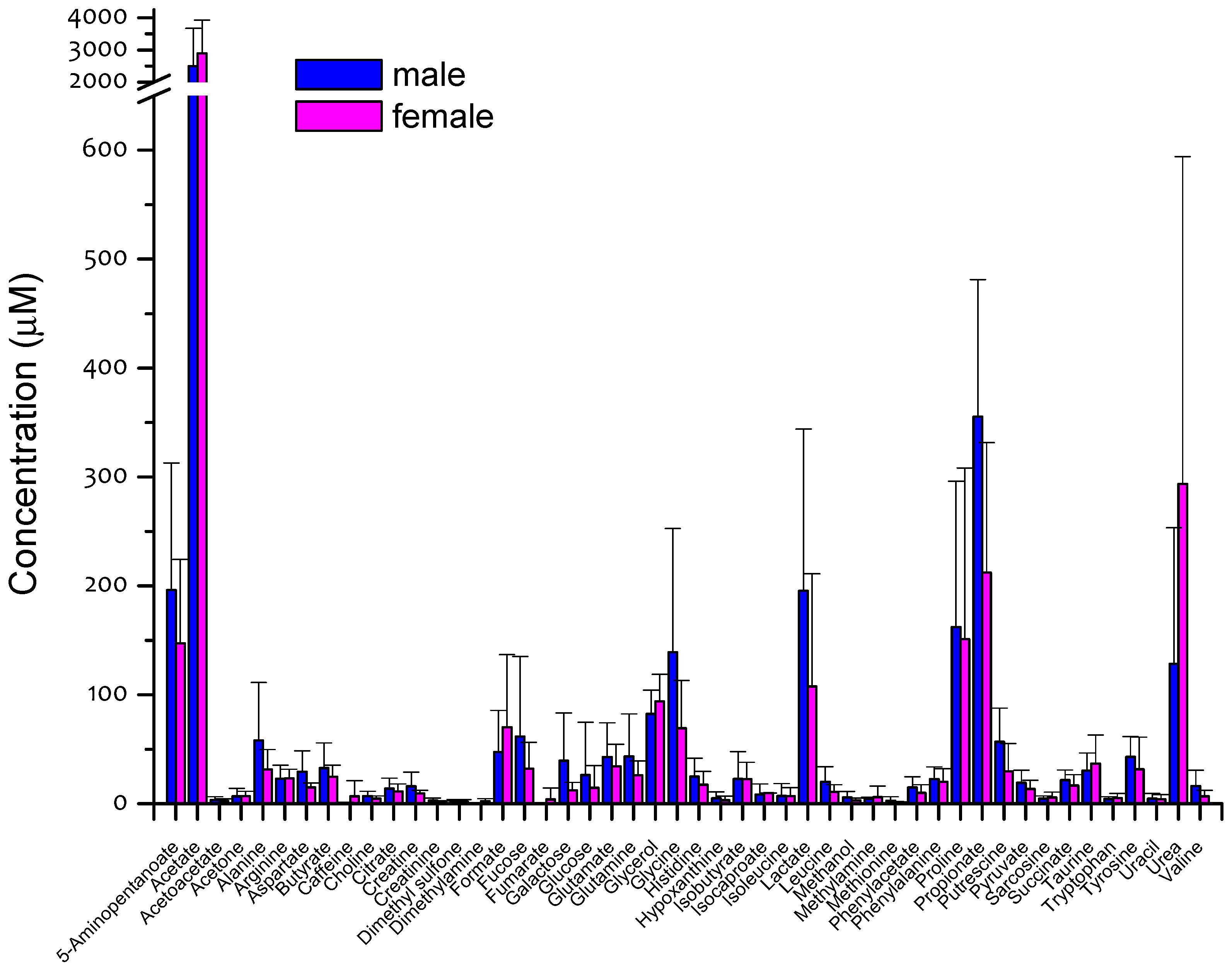Salivary Metabolic Analysis in Healthy Subjects and Perspectives for Patients with Oral Cancer: Pilot Study and Systematic Review †
1. Introduction
- to report the results of a pilot analysis on metabolic salivary composition of 20 healthy subjects.
- to perform a systematic review designed to answer to the question: “Is there evidence that support the use of salivary metabolomics for diagnosis of OSCC?”
2. Materials and Methods
3. Results
4. Conclusions
Conflicts of Interest

© 2019 by the authors. Licensee MDPI, Basel, Switzerland. This article is an open access article distributed under the terms and conditions of the Creative Commons Attribution (CC BY) license (http://creativecommons.org/licenses/by/4.0/).
Share and Cite
Antonelli, R.; Pezzi, M.E.; Viani, M.V.; Pertinhez, T.A.; Quartieri, E.; Ghezzi, B.; Setti, G.; Vescovi, P.; Meleti, M. Salivary Metabolic Analysis in Healthy Subjects and Perspectives for Patients with Oral Cancer: Pilot Study and Systematic Review. Proceedings 2019, 35, 44. https://doi.org/10.3390/proceedings2019035044
Antonelli R, Pezzi ME, Viani MV, Pertinhez TA, Quartieri E, Ghezzi B, Setti G, Vescovi P, Meleti M. Salivary Metabolic Analysis in Healthy Subjects and Perspectives for Patients with Oral Cancer: Pilot Study and Systematic Review. Proceedings. 2019; 35(1):44. https://doi.org/10.3390/proceedings2019035044
Chicago/Turabian StyleAntonelli, Rita, Margherita Eleonora Pezzi, Maria Vittoria Viani, Thelma A. Pertinhez, Eleonora Quartieri, Benedetta Ghezzi, Giacomo Setti, Paolo Vescovi, and Marco Meleti. 2019. "Salivary Metabolic Analysis in Healthy Subjects and Perspectives for Patients with Oral Cancer: Pilot Study and Systematic Review" Proceedings 35, no. 1: 44. https://doi.org/10.3390/proceedings2019035044
APA StyleAntonelli, R., Pezzi, M. E., Viani, M. V., Pertinhez, T. A., Quartieri, E., Ghezzi, B., Setti, G., Vescovi, P., & Meleti, M. (2019). Salivary Metabolic Analysis in Healthy Subjects and Perspectives for Patients with Oral Cancer: Pilot Study and Systematic Review. Proceedings, 35(1), 44. https://doi.org/10.3390/proceedings2019035044






